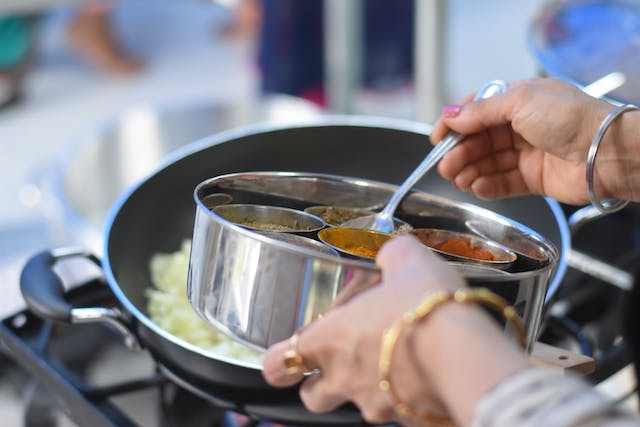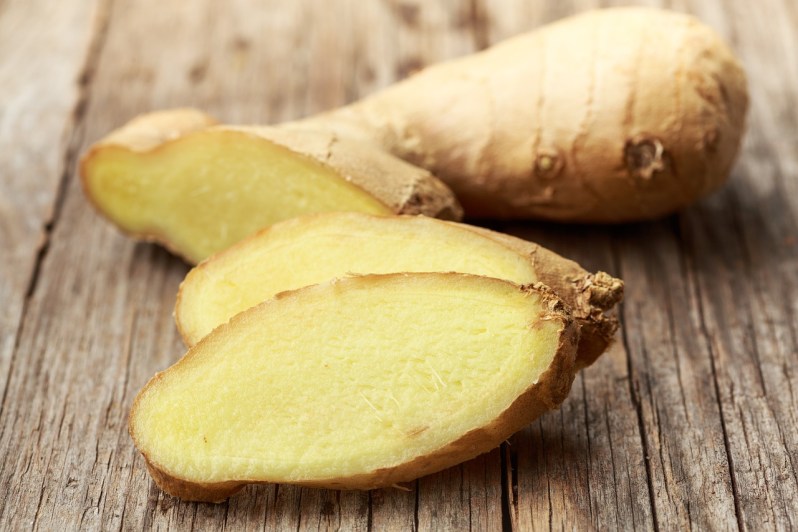
There’s no question that what makes Indian food so good is the unique combination of spices used — all of which come together for a taste that is unlike any other cuisine. From chicken tikka masala to Indian butter chicken, classic Indian meals use a combination of spices, including turmeric, cardamom, ginger, cumin, and chili pepper. But did you know these spices offer more benefits than just an amazing taste?
Many of the spices used in Indian cooking have unique health benefits — some of which might surprise you. Below, we’ll explore a few spices used in Indian dishes and how their benefits may help you improve your health.

Popular and prominent Indian spices
Many of the flavorful spices used in Indian cooking fall within the “seven spices of India,” which refers to spices that are native to India. These spices not only give Indian food a rich flavor but also have a strong aroma. While most of us know these spices for their use in cooking, few know the unique health benefits of each of these spices.
Turmeric
You can’t miss turmeric in any spice aisle known for its bright orange color. This spice comes from the root of the turmeric plant, which is then ground and dried to make it into powder form for use in cooking. Many people describe this spice as having an earthy, almost bitter taste. Since turmeric is a fairly strong spice, it is often used in small quantities in Indian meals, such as curry chicken.
The health benefits of turmeric are often discussed in the health space, thanks to the active ingredient known as curcumin. Only a tiny portion (about 5%) of turmeric contains curcumin, but this 5% is mighty. Curcumin is sold in supplement form and can be taken to help support a variety of health conditions, such as arthritis and other types of conditions linked to inflammation. Research has found that curcumin offers powerful anti-viral, anti-inflammatory, and potentially anti-cancer properties. The list of turmeric benefits goes on and on!
Cardamom
Another common spice used in Indian food is cardamom, which comes from a plant similar to ginger. This spice offers a unique flavor that is often described as having similarities to mint or nutmeg but is unique in its way. In Indian cuisine, the cardamom spice is used in warm curry dishes, such as soups or stews, or even in Indian rice pudding.
Several research studies have explored the unique cardamom benefits for our health, which range from helping lower blood pressure to improving symptoms in people with digestive problems such as IBS. One interesting study found that cardamom can lower blood pressure in adults thanks to its high antioxidant content. It is also thought that cardamom may have a slight diuretic effect, which means it helps expel water from the body (also helping to lower blood pressure).
Ginger
Although the cardamom plant is similar to ginger, both spices have a unique flavor. This ground spice is derived from the underground root stem of a ginger plant and then dried and powdered to be used as a spice. Many people describe ginger as having a slightly warm or “firey” taste. In Indian cuisine, you’ll often find ginger used in chicken curry, chicken tikka masala, and lentil dishes to enhance the flavor.
Ginger offers many unique health benefits but is most commonly used to help relieve nausea, vomiting, and other digestive issues. Ginger is also thought to contain some anti-inflammatory compounds which could help fight against chronic disease.
Cumin
Cumin is the most commonly used spice in India which adds a warm flavor to savory cooking (often used in stews, curries, soups, and other warm dishes). Curry powder is often made with cumin as its primary ingredient thanks to its rich flavor. Not only does cumin taste amazing when added to Indian dishes, but it also is being explored for its potential health benefits. Some studies done in animals have suggested that cumin may have a role in helping to fight certain types of cancer. Other studies have found cumin could also support weight loss, although further research is needed to make accurate conclusions.
Chili pepper
Chili pepper is commonly used in spicy Indian meals such as various types of spicy curry meals. Inside chili pepper is a component known as capsaicin which is thought to offer many health benefits, such as reducing the risk of heart disease and helping to fight against inflammation. If you can handle the heat, consider adding a touch of chili pepper to your meal!

Savoring Indian cuisine
If you love Indian food, the surprising health benefits of these Indian spices might just convince you to eat it more often. Commonly used spices in your favorite Indian dishes, such as cumin and ginger, not only taste delicious but could help you combat inflammation and reduce your risk of developing chronic diseases such as heart disease and diabetes.



